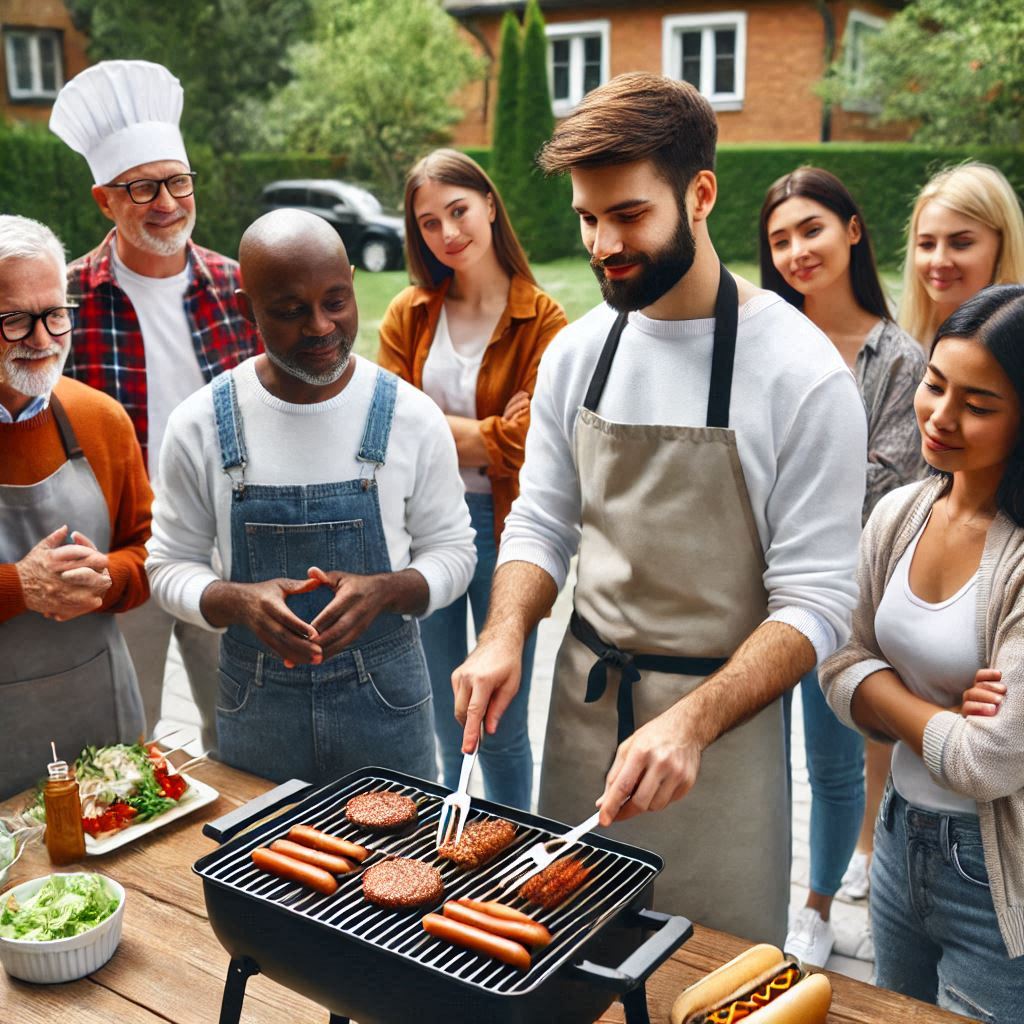
Starting your grilling journey can be exciting and a little overwhelming. Whether it’s a backyard barbecue or a small patio cookout, getting the right tools and equipment is key. Let me walk you through some essentials to make sure you’re prepped and ready to grill like a pro.
First off, let’s talk grills. You’ve got a few choices: charcoal, gas, and electric. Each has its vibe. Charcoal’s great if you love that smoky flavor and don’t mind waiting for it to heat up. Gas is quick and super convenient—ideal for those spontaneous grill cravings. Electric is neat for apartment living where open flames aren’t cool with your building rules. Picking your grill depends on your lifestyle and taste preferences.
Once you’ve got your grill, setting it up safely is non-negotiable. It’s not just about turning a knob or lighting a match. Make sure your grill’s on a stable surface, away from anything that might catch fire like overhanging branches or your wood deck. And always have a fire extinguisher nearby just in case. Regularly check for gas leaks if you’ve got a gas grill—safety first, always.
Maintenance might not sound fun, but a clean grill is a happy grill. Keeping it clean not only helps your food taste better but also extends the life of your grill. After every use, brush off the grates to remove leftover food bits. If you’ve got a charcoal grill, clean out the ashes once they cool down. For gas grills, check your burners and make sure they’re not blocked. Little upkeep goes a long way.
That’s the gear talk. Next up, let’s chat heat and how to handle it like a true grill master. But for now, get familiar with your grill and gear up. You’re on your way to some fantastic grilling adventures.
Mastering the Heat: Temperature Control
Getting the heat right is like finding the sweet spot. It’s a must for grilling up some delicious food. Whether you’re firing up a charocal or gas grill, managing your heat is key.
Let’s break it down with direct vs. indirect heat. Direct heat means cooking your food straight over the fire, perfect for stuff that grills in a flash, like burgers and sausages. Indirect heat is your go-to for bigger cuts like whole chickens or ribs, where you place the food to the side of the heat source, kind of like baking. If you master this balance, you’re halfway to grilling greatness.
Now, each type of grill handles heat differently. For gas grills, adjusting burners is a breeze, giving you easy control. Charcoal requires a bit of art—managing the coals by spreading them thin for a lower heat or clustering them for higher heat. Electric grills can be like a stovetop, where you dial in your desired temperature. Knowing your grill’s quirks pays off big time.
Creating heat zones is where the fun starts. You can have one side of the grill hotter than the other, letting you sear on one side and slow-cook on the other. This versatility opens up a whole world of grilling possibilities. Get those heat zones dialed in, and you’re golden.
Don’t forget preheating. Like warming up before a workout, preheating your grill can make everything cook evenly and help prevent food from sticking. It’s all about consistency, so give your grill a good 10-15 minutes to get up to temp before throwing your food on.
Temperature management might look like a juggling act, but with a bit of practice, you’ll be flipping steaks and veggies like a natural. Keep experimenting, and you’ll find what works just right for you and your grill.
Choosing Your Ingredients: Quality and Preparation
Quality ingredients make all the difference between an okay cookout and an unforgettable one. Picking fresh, high-quality stuff isn’t just for looks; it really kicks things up a notch in the flavor department.
When it comes to meats, choosing the right cuts is super important. Something like ribeye or T-bone for steaks, or thighs over breasts for chicken if you’re after juicy, flavorful bites. Visiting your local butcher can be a game-changer; they can guide you to the freshest picks and might even hook you up with some insider grilling tips.
Vegetables are no different. Fresh, in-season produce will always taste better. Try to grab vibrant greens or deep reds when you’re picking out veggies. Awesome choices for grilling include bell peppers, zucchini, and corn—things that can handle the heat and develop amazing flavors.
Now, let’s get to the fun part—marinades, rubs, and seasonings. A simple blend of olive oil, lemon juice, garlic, and herbs can work wonders as a marinade. Rubs are even simpler—think salt, pepper, and perhaps some paprika or cumin for a quick flavor boost. The goal is to complement the natural taste of your food, not overpower it. Remember, sometimes less is more.
Prepping your ingredients matters too. For meats, trimming excess fat helps prevent flare-ups. For veggies, try cutting them into even pieces so they cook at the same rate. You want everything to turn out just right, not some charred mess on one side and raw on the other.
Grilling isn’t just about cooking; it’s about enjoying the process and sharing great food. With some choice ingredients and a little creativity, you’ll be serving up plates your friends and family won’t forget in a hurry.
Perfecting the Art: Grilling Techniques for Beginners
Grilling’s not just about throwing food on the barbie and hoping for the best. Mastering a few techniques can really level up your game, turning you from a novice to a seasoned grill wizard in no time.
Let’s kick it off with searing. This is all about locking in those juices and adding a mouth-watering crust to meats. Make sure your grill is piping hot before getting those steaks on. A quick sear on each side, then you can finish cooking them on indirect heat—easy peasy lemon squeezy.
Smoking adds that deep smoky flavor everyone loves. You won’t need a fancy smoker to start; just toss some soaked wood chips onto your charcoal, or use a smoker box in a gas grill. Go for something simple like hickory or applewood to get those amazing aromas flowing. Once you’ve got a hang of that, the flavor possibilities are endless.
A meat thermometer is your best friend for nailing doneness. Not all grills heat food evenly, and a thermometer ensures that chicken isn’t still clucking inside and your pork’s cooked just right. No guessing games here—trust the science.
Grilling can come with its fair share of challenges, but with practice, you can overcome them. Flare-ups, for instance, happen when fat hits the flames. Keep a spray bottle of water handy. For sticking, oiling your grill grates before cooking works wonders. And to avoid uneven cooking, try rotating and flipping your food over multiple times.
Infusing flavor is where you can really have fun. Wood chips, marinades, and even brining can take your dishes to another level. Mix in some creativity with your favorite spices or herbs and try new combinations. It’ll make your grilling experience not only more flavorful but also more personal.
Embrace every grilling session as a chance to experiment, learn, and share delicious moments with friends and family. Keep these tips in mind, and enjoy the tasty results of your newfound grilling skills!
